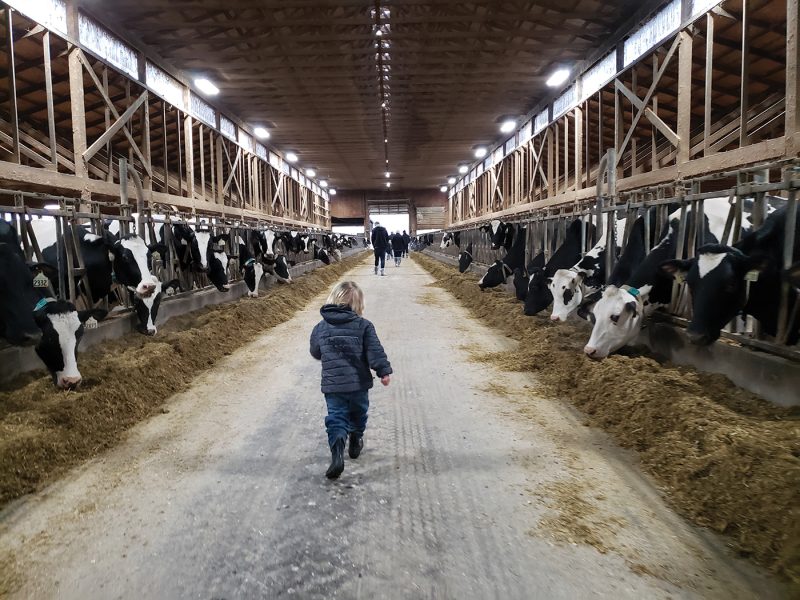ABBOTSFORD – The final results of a cost of production survey BC’s dairy sector undertook last year has confirmed the sector’s dire straits.
Producers in BC are losing an average of 48 cents per kilogram of butterfat, a loss that rose to $4.19 per kg when off-farm revenue, cattle sales and other income is factored out.
Based on 2021 data from a select group of 27 of the province’s 469 dairy farmers, the losses have almost certainly increased over the past two years.
“It’s almost a perfect storm for dairies in BC at the moment, and that moment started probably three or four years ago when you think of trade deals that were signed internationally, then you start thinking of successive natural disasters that impacted dairies right across the province,” says BC Dairy general manager Jeremy Dunn. “Now we’ve got high inflation, high interest rates on top of that, and these are creating scenarios that are very challenging for our dairy farmers across BC.”
Production costs were highest in northern BC, at $28.10 per kg, and lowest in the Interior, at $17.33 per kg. The most significant input cost province-wide was feed, at 21% of expenses, followed by labour at 7%.
But in the Lower Mainland, home to 16 of the survey’s participants, land costs were a key factor.
“The really high cost of land coupled with the interest rates creates a much higher debt and payment burden, and capital burden, for producers here in the Lower Mainland,” says Dunn, noting that diversification opportunities are limited by the land base.
“A dairy farm has a more diversified revenue stream in some other parts of the country than you do in the Lower Mainland,” he says. “The close proximity to the market and a lot of those things have been helpful, but currently in the economic climate it’s those additional business streams that are helping dairies in some other parts of the country.”
This includes feed production, which many farmers in the Lower Mainland have to truck in, this year at some expense due primarily to fuel costs.
“The more you have to buy feed for your cattle, the more it’s eating into your margins,” Dunn says.
“There’s one dairy that we’ve sold barley to in the past and he plans to keep buying from up here,” says Maclcolm Odermatt, a grain producer near Baldonnel. “He trucks it all down, but with the price of fuel it’s pretty tough right now on him.”
A key hurdle for producers is cost recovery given the clout processors and retailers have in the market. While the farmgate price of milk is set by the Canadian Dairy Commission following an annual cost of production study, this year’s increase of 1.77% was vetoed by retailers, who said it ran counter to federal efforts to hold the line on grocery prices.
Dairy Farmers of Canada, which represents the provincial dairy groups in Ottawa, approved the request, which will up the pressure on BC producers.
Some are looking to sell assets while others may simply exit the sector. High interest rates means refinancing is more costly than two years ago, and revenue simply isn’t keeping up.
Gord Houweling, who spent 30 years dairy farming before joining BC Farm and Ranch Realty Corp., says the past two years have been “extremely challenging” for producers. But before selling out, most farmers will seek ways to pay down debt to reduce servicing costs.
“The bulk of farms that need to deleverage begin with small parcels of land if they have those,” he says.
While it’s tough to say there’s been an increase in such listings, BC Farm and Ranch has several dairies listed for sale while other producers have sold animals and quota and kept their land.
Dunn says the acute challenges facing producers in BC are being taken seriously by the Western Milk Pool, because of the ripple effects local hardship will have regionally.
“Cost of inputs are rising at a faster rate in BC than in some other parts of the country,” he says. “[We] are trying to create a climate where our producers can have more economic stability.”
In particular, the sector is asking government to carefully consider the financial impacts new policies will have on the sector.
“It is currently the top issue we are raising with the provincial government on a regular basis, to be very mindful of the business sustainability that dairy farmers are living in,” he says.
Since July 24, BC Dairy has met twice with provincial agriculture minister Pam Alexis on the issue as well as engaged ministry staff and MLAs from all parties regarding rising production costs.


 Kelowna fallow farmland returns
Kelowna fallow farmland returns